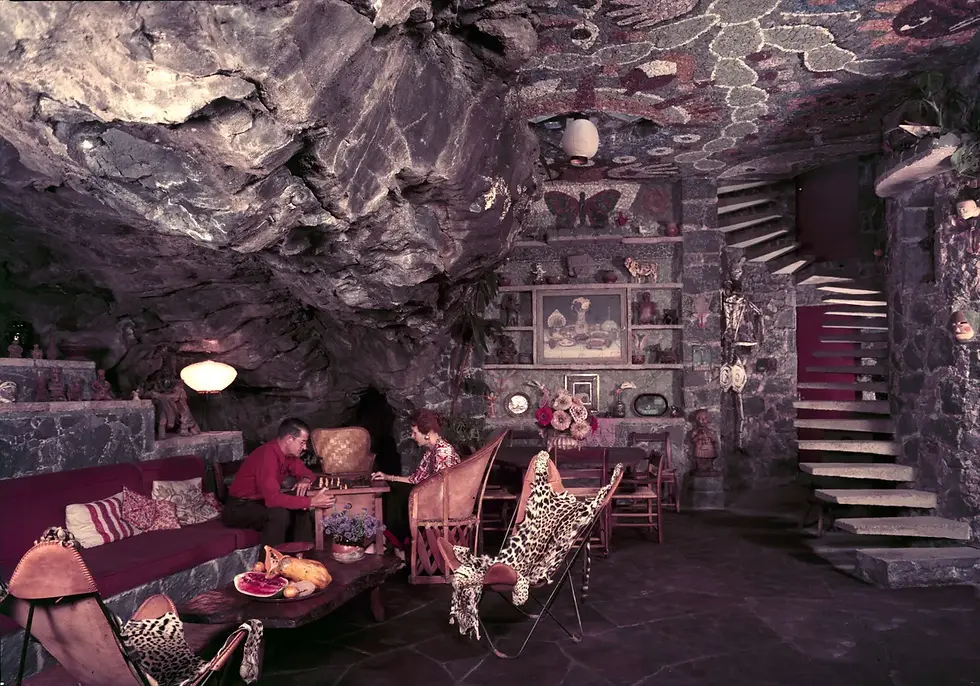Juan O’Gorman and the Brutalist Vision: A Legacy of Raw Beauty
- EJC
- Mar 5
- 2 min read
Juan O’Gorman, one of Mexico’s most visionary architects and artists, played a crucial role in shaping modern Mexican architecture. While often associated with functionalism and organic integration, his later works also align with the raw, expressive qualities of Brutalist architecture. His commitment to honesty in materials, sculptural forms, and the interplay between built environments and nature resonate deeply with the principles of Brutalism—a movement that emerged in the mid-20th century as a reaction against ornamentation and superficiality in architecture.
O’Gorman’s early career was marked by an embrace of functionalism, strongly influenced by Le Corbusier’s principles of efficiency and practicality. His famous design for the Rivera-Kahlo Studio (1931) exemplifies this rational approach: a structure of clean geometric lines, pilotis, and an emphasis on spatial economy. However, as his career progressed, O’Gorman shifted towards a more expressive and symbolic approach, distancing himself from strict functionalist doctrines.

This transition is evident in his later works, particularly the Central Library of the National
Autonomous University of Mexico (UNAM). Completed in 1956, the library is a masterpiece where architecture and art merge seamlessly. While its iconic mural-covered facade sets it apart from traditional Brutalism, the massive, monolithic nature of the structure, its reliance on raw materials, and its integration into the surrounding landscape embody key Brutalist principles.
Brutalist aesthetic is often characterized by its use of raw concrete (béton brut), monumental scale, and a rejection of unnecessary decoration. O’Gorman’s later projects, such as his self-built cave-like home in Pedregal (demolished in 1969), displayed a similar ethos—favoring raw volcanic stone, irregular organic forms, and an almost primal connection to the environment. The house blurred the lines between nature and architecture, much like Brutalist buildings that seek to integrate with their urban or natural surroundings rather than dominate them.

His use of unrefined materials, exposed structural elements, and a deep respect for context echo the philosophies of Brutalist pioneers such as Paul Rudolph and Alison & Peter Smithson. The heavy, fortress-like qualities of his later designs also align with the imposing and sculptural aesthetics seen in global Brutalist landmarks.
As Brutalism experiences a resurgence in contemporary architecture and design, O’Gorman’s work offers a unique perspective on how the movement can be adapted to different cultural contexts. His ability to merge local materials, Mexican artistic traditions, and Brutalist principles provides a roadmap for architects seeking to create buildings that are both monumental and deeply rooted in their environment.
By looking at O’Gorman’s architectural legacy through the lens of Brutalism, we can appreciate his fearless experimentation with form and materiality. His work reminds us that architecture is not just about function or aesthetics—it is about creating spaces that challenge, inspire, and endure.



Comments